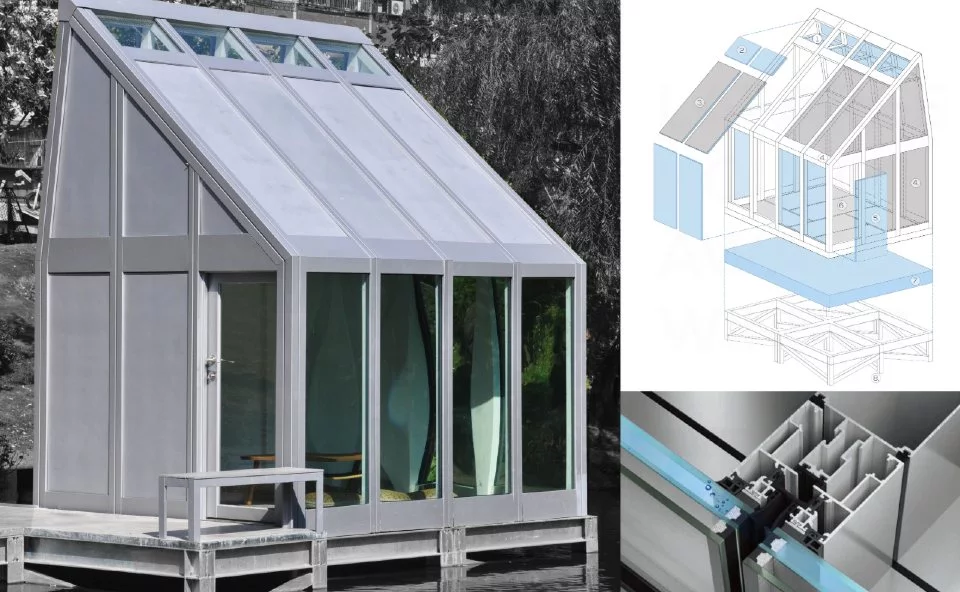When it comes to keeping buildings energy efficient, windows certainly pose a challenge. It was with this quandary in mind that a British scientist has created a new type of window – one that's filled with water.
There are two main problems with conventional windows. For one thing, most of them allow heat to escape during cold weather, causing the building's furnace to run more frequently. For another, they allow sunlight to stream in during hot weather, creating heat that causes the air conditioning to kick in.
Dr. Matyas Gutai, a lecturer in architecture at Loughborough University, believes that his "water-filled glass" (WFG) windows may address these limitations.
Each window contains a vertical sheet of water, sealed between two sheets of glass. As sunlight passes through the glass, it heats the water, thus keeping the room itself from getting as hot as it would otherwise.
Once it reaches a high enough temperature, that sun-warmed water is pumped out of the window, travelling through pipes in the wall to a storage tank elsewhere in the building. Cooler water is simultaneously pumped into the WFG, to replace that which was pumped out.
When the outdoor temperature drops later on, the stored warm water is pumped back out of the tank and into the pipes, warming the room by radiating heat through the walls. Alternatively, that warm water can also be used in the building's taps, reducing the need to run the water heater.
Although some electricity is required to pump the water back and forth, Gutai claims that his setup still uses substantially less energy than the heating systems and air conditioners that would be required to maintain the same room temperatures under the same conditions.
In fact, based on computer simulations, it is estimated that a WFG-equipped building (utilizing a heat pump within the system), would use up to 72 percent less energy than a similar building equipped with double-glass windows and traditional heating systems. That figure drops to a still-impressive 61 percent for a building with triple-glass windows.

Gutai tells us that in sub-zero winter climates, the water could be kept from freezing by adding an extra sheet of glass with an insulating layer of argon gas sealed inside. He adds that sunlight and heat from the room should also help keep the water from freezing, although if all else failed, an automated system could pump all the water out of the window if temperatures got too low.
Additionally, because the sealed system doesn't allow oxygen or micro-organisms to enter, algae shouldn't grow on the glass. And as an added benefit, unlike other solar-heat-reduction systems, WFG doesn't require external shades such as louvres, nor do the windows need to be tinted. What's more, the water-filled glass is reportedly very good at blocking sound.
"Glass is currently a liability in buildings as it compromises energy consumption, thermal comfort, acoustics and other aspects," says Gutai. "WFG changes this paradigm and turns glass into an opportunity for sustainable construction. It shows us that thinking holistically about buildings and building components leads to a more efficient and sustainable built environment."
A paper on his latest study – which was conducted in collaboration with Dr. Abolfazl Kheybari of Germany's University of Kaiserslautern – was recently published in the Energy and Buildings Journal.
Source: Loughborough University




